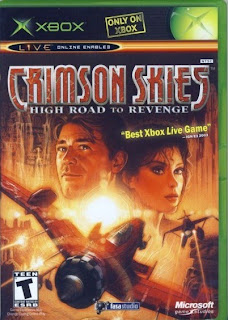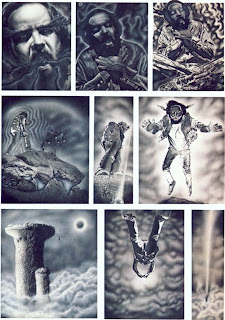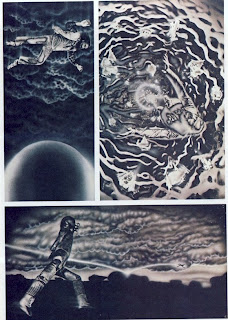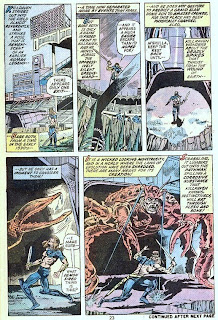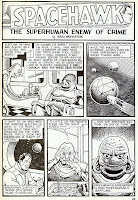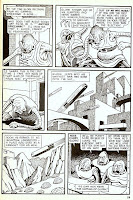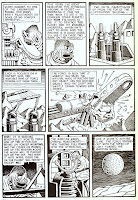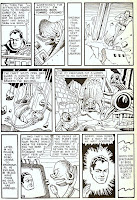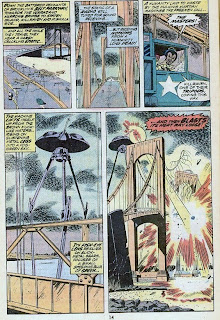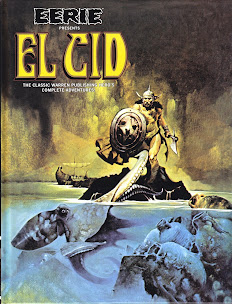
Back in 1970, or perhaps 1971 a neighborly woman named Esther Fuller, who was active in the Boy Scouts in my hometown, dropped off a box filled with old books at our house. The books were from the 1900s on up to 1940s. Since I was only 10 or 11 years old at the time, and my brothers and sisters even younger, we didn’t realize that these books were actually valuable as heirlooms and treated them rather carelessly. But we did read them, and one of the most interesting was ‘Stratosphere Jim and His Flying Fortress’ (Grosset and Dunlap, 1941) by Oskar Lebeck and Gaylord DuBois.
DuBois (1899 – 1993) was a prolific writer of children’s books and comics, many in partnership with Lebeck; his granddaughter maintains a blog devoted to his life and works. Online information on Lebeck is more scarce; as best I can tell, he was an editor of children’s books and comics at Dell publishing during the 30s, 40s, and perhaps the 50s.
“Stratosphere Jim’ first appeared as a comic serialized in Crackajack Funnies, issue 19, January, 1940. The series was quite popular and ran until issue 43 (January, 1942), when Crackajack ceased publication. Capitalizing on the comic's success, Lebeck and DuBois teamed up to publish a novelization of ‘Stratosphere Jim and His Flying Fortress’.
The 'Jim' of the title is one Jim Baxter, gifted engineer and pilot, who creates a stylish ‘stratoplane’ that is remarkably advanced for its time, with a rocket-assisted engine and helicopter-style props embedded in the wings. But with tensions rising between the USA and a foreign power overseas, Jim realizes that a more formidable weapon may be required should conflict break out. So, with the assistance of his friend Harry Wells, Jim sets up a secret aircraft plant in the Rocky Mountains and constructs an enormous four-engine bomber, the ‘Fortress’ of the title.

Before long Jim and his crew are taking the Fortress across the Atlantic and into Europe, where forces of the malevolent nation of Caucasia – a stand-in, of course, for Nazi Germany- are wreaking havoc on their neighbors. The action picks up as Jim and the Flying Fortress engage in battle with elements of the Caucasian air force, navy, and army. And when a massive enemy invasion fleet is spotted heading for the Caribbean, and possibly the Panama Canal, the only force available to deter it is Jim and his flying marvel. Can Stratosphere Jim act in time to eliminate the threat to American freedom ?
But the thing I remembered most about the book upon reading it back in the early 70s was the funky nature of the aircraft: Dieselpunk / Art Deco / Futurist monoplanes with bulky engine cowlings, and nonretractable wheels encased in enormous fairings. The stratoplane features a cockpit nestled against the vertical stabilizer, much like Jimmy Doolittle’s 1932 ‘GeeBee Model R’ race plane. The Flying Fortress has an interior packed with enormous cannons, a hanger for the stratoplane, a dining room, lounge, and galley (!) and helicopter rotors that permit it to hover in mid-air.
The years went by and ‘Stratosphere Jim’ was lost to time and more or less forgotten. Until 2000, when I learned that Microsoft was releasing a PC game called ‘Crimson Skies’, which had in turn been developed from a 1998 board game by FASA.
Along with a 30’s pulp-friendly atmosphere, the game avidly incorporates Art Deco and Dieselpunk elements into its design, and features a great selection of aircraft that would be right at home in ‘Stratosphere Jim’. Sadly, the PC game was horribly buggy and I didn’t buy it, but when in October 2003 Microsoft produced a version of the game for the Xbox console titled ‘Crimson Skies: High Road to Revenge’ I picked it up.
This is a decent game; the graphics are well done, the airplane controls are reasonably user-friendly, there are a variety of mission types, and the storyline is engaging. The game’s difficulty and save system can be frustrating during the later missions (the final mission is ridiculously difficult and requires using the cheat codes to complete). But ‘Crimson Skies’ comes pretty close to providing the player with an experience akin to that of 'Stratosphere Jim and His Flying Fortress'.








